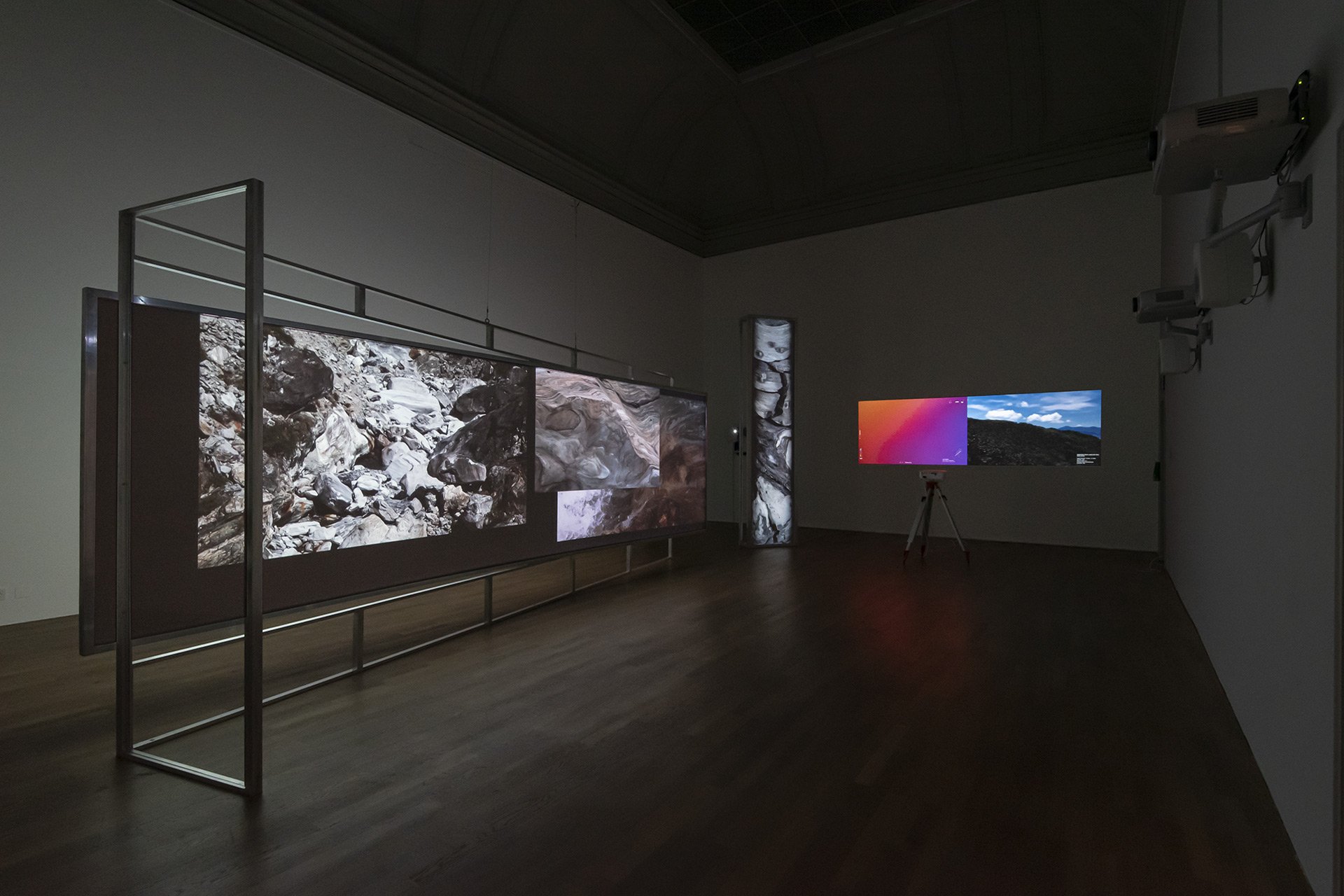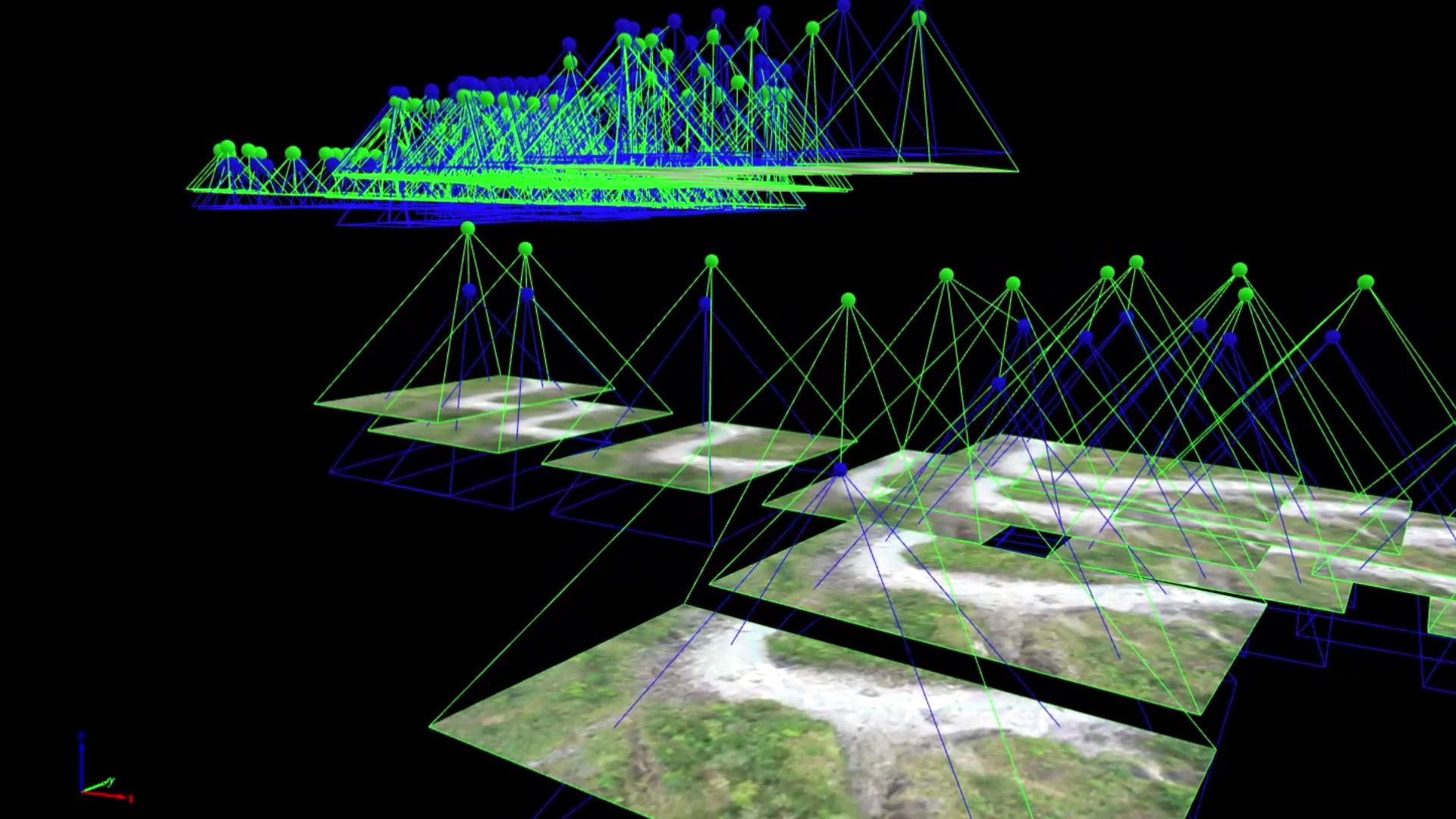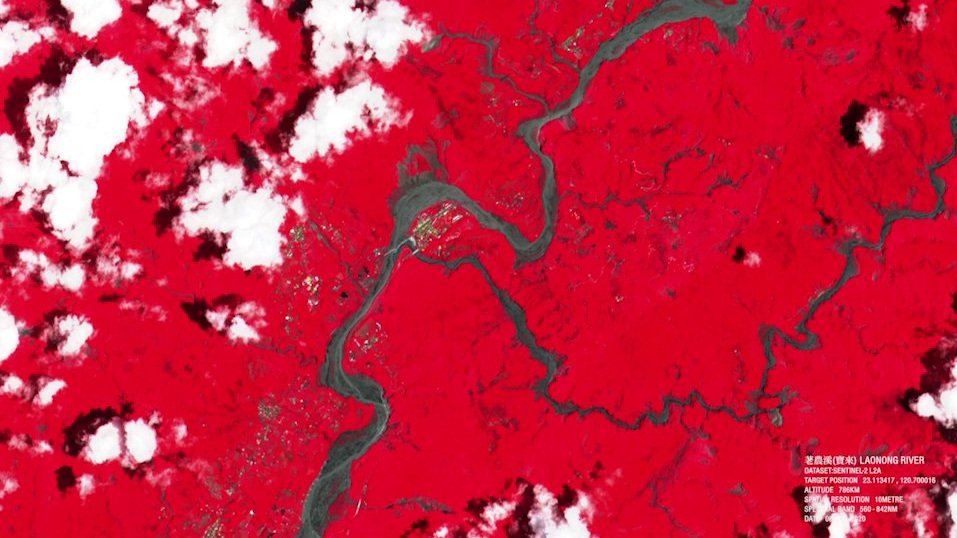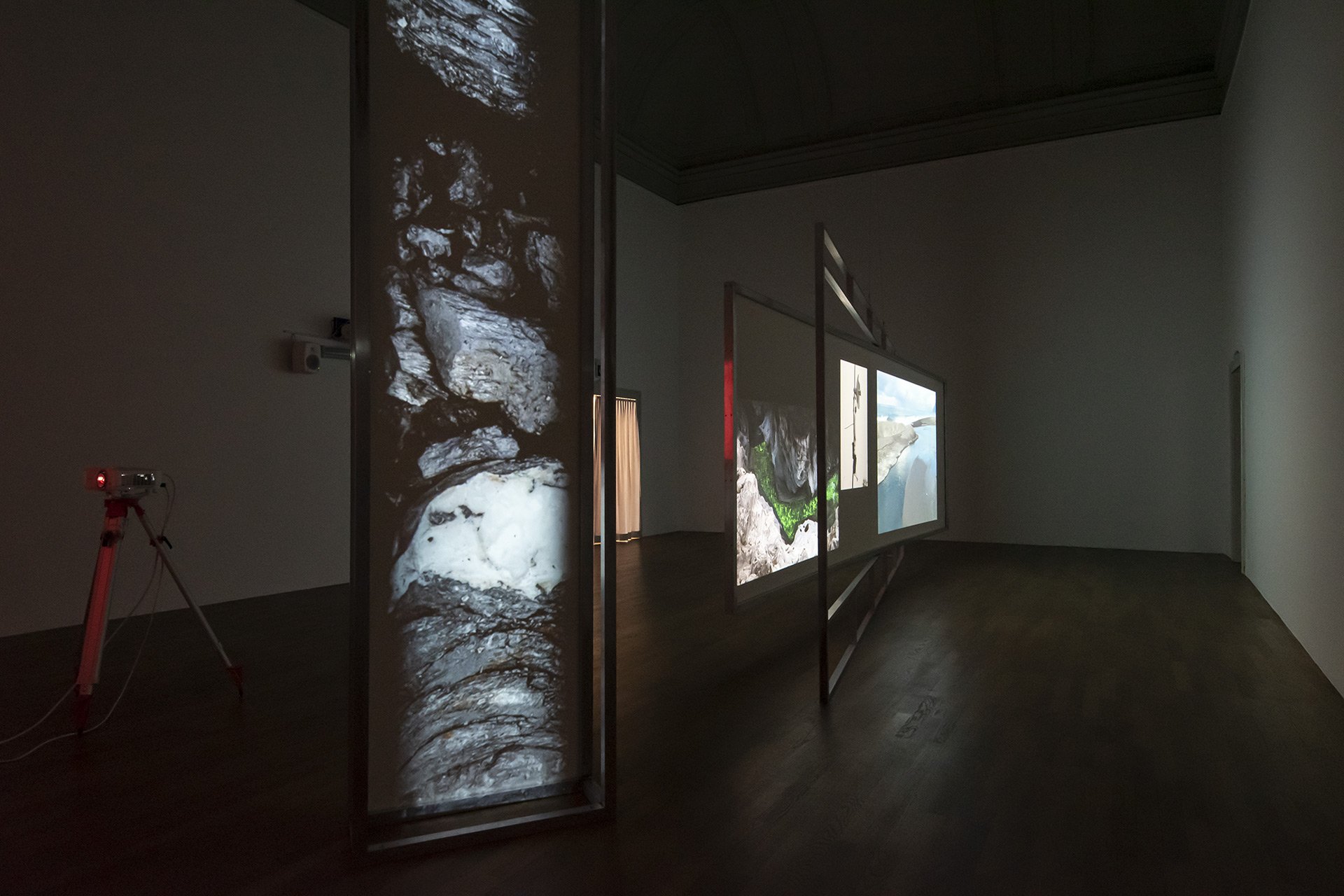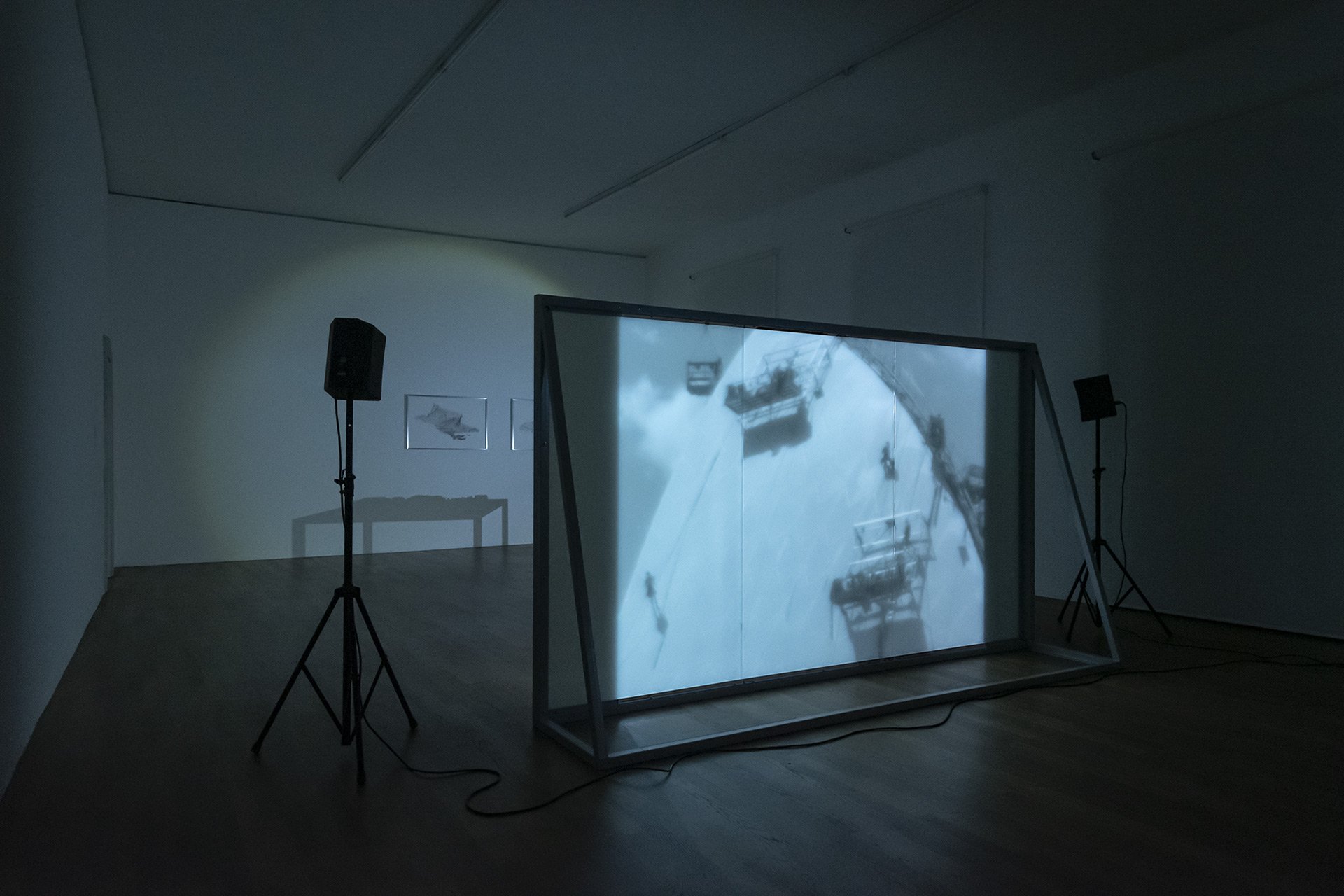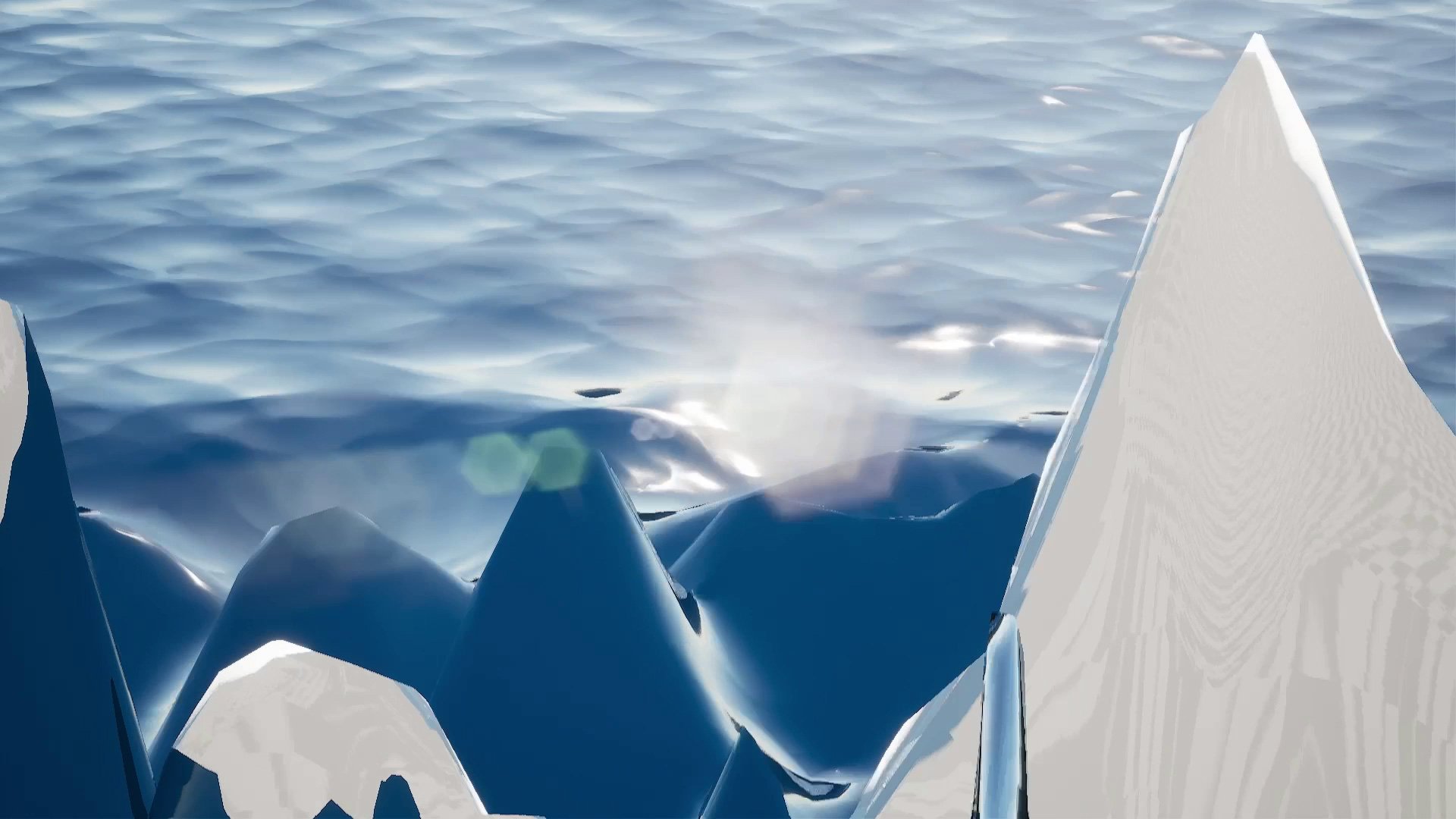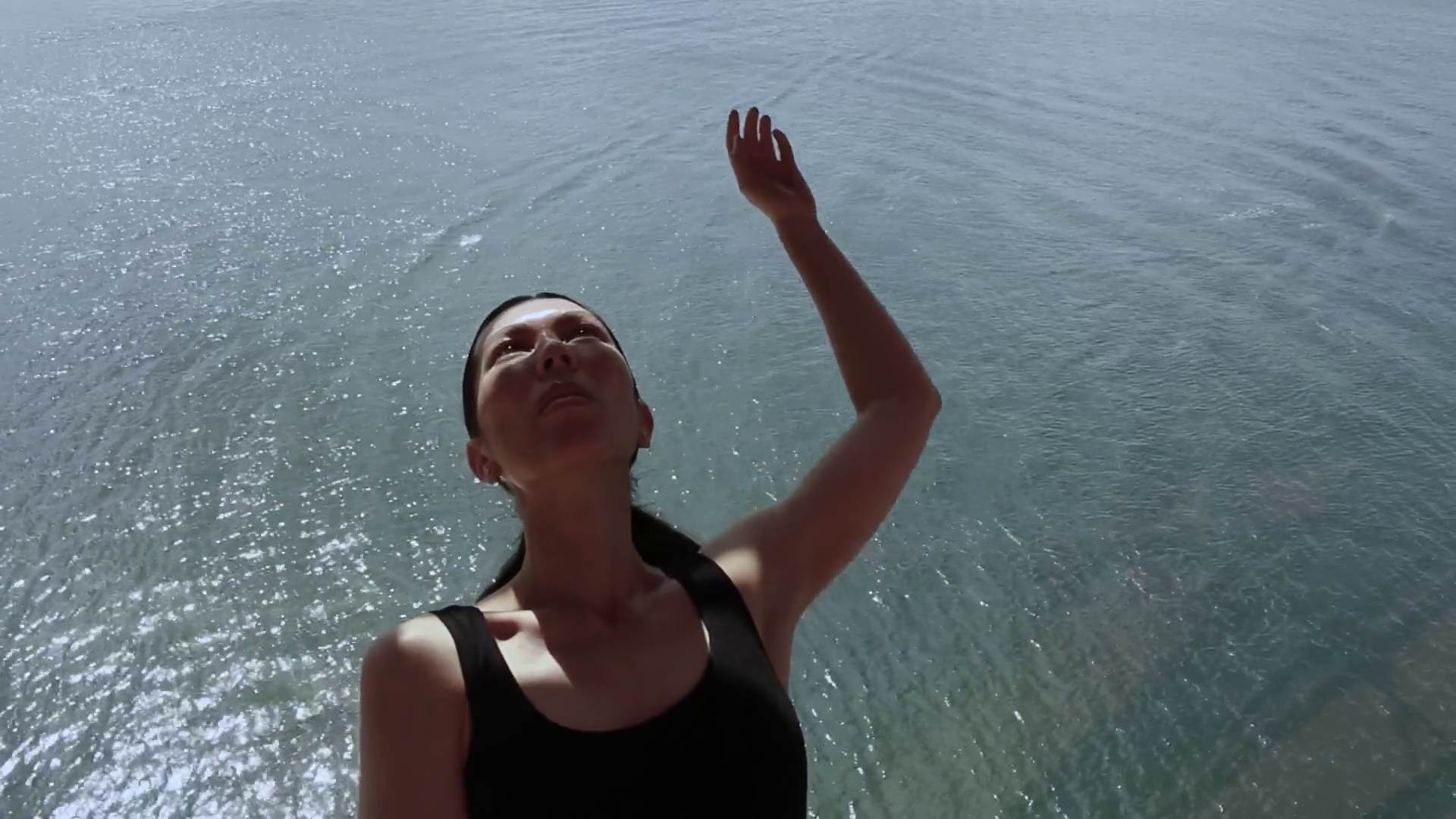Su Yu Hsin
Wet Mechanics of Seeing
May 29 – July 24 2022
In the main hall of the Kunsthalle Winterthur, Su Yu Hsin (b. 1989 in Taichung, lives in Berlin) presents two video installations: frame of reference I and frame of reference II (2020), a collaboration with the German Research Centre for Geosciences Geomorphology in Potsdam and the NCTU Disaster Prevention and Water Environment Research Center, commissioned for the Taipei Biennial 2020. Both are independent and individual pieces of work, focussing on a particular question: in what ways does collected and measured data that examines a particular situation or instance, actually relate to its’ real life counterparts?
Both works are visual recombinations of information obtained from field studies, data collection and interpretation, forming multi media collages with documented situations, visualisations and animations. frame of reference is a parable about scientific observation, the parameters of visualisation and the possibilities and limits of knowledge production on which it is based. Science often refers to so-called “hard facts” and objective data, yet without interpretation it is near impossible to derive useful guidelines from data. By selecting the parameters of interpretation, one defines a subjective and particular point of view, thus potentially opening data interpretation up to the arbitrary.
The reference system provided by Tidal Variations (2021) in the small hall appears rather different at first sight; commissioned by the Sydney Opera, it is a co-production with the Australian dancer and choreographer Angela Goh, connecting the medium of light with the element of water. Filmed in and around the Sydney opera and combined with archival footage of the opera building, Tidal Variations focuses on the architectural element of the window. From there it creates an analogy between the continuously changing ocean outside and the constant flow of Internet data, visible through digital windows on our computer screens.
It is the two C-prints fluvial bedrock I & II (2021) and Meshed Waves (2022), all showing computer-modelled topography, that connect frame of reference and Tidal Variations. As in frame of reference, the data for fluvial bedrock I & II originates from the river Liwu in the Taroko national park in Taiwan. Meshed Waves is based on open source bathymetric data from the Mediterranean Sea. Although the visual results of the three works appear similar, the process behind them is completely different: the riverbed is reconstructed with photogrammetry, a technology using two-dimensional photographic information to model a three-dimensional topography, whereas submarine cartography of the Mediterranean and larger open bodies of water is based on the sonar, working with the reflection of sound waves.
Supported by the National Culture and Arts Foundation, Taiwan.
